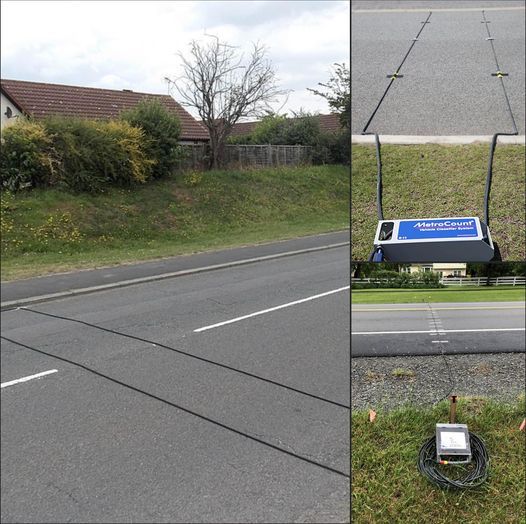
If you’ve ever noticed black cables stretched across the road while driving, you might have wondered what they are and what purpose they serve. These seemingly unremarkable rubber tubes play a significant role in managing and improving transportation systems. But what exactly are they, and why are they placed on roads? The answer lies in data collection and traffic management.
Understanding the Purpose of These Black Cables
These black tubes, commonly known as pneumatic road tubes, are used as portable traffic counters for research and analysis. Transportation agencies, particularly municipal organizations, install them to gather crucial information about traffic patterns and road usage. Across various regions, thousands of these traffic counters are strategically placed to collect valuable data that aids in the planning, development, and maintenance of roadways.
Far from being just passive fixtures, these tubes are critical tools in shaping traffic policies. The data they collect informs decisions about speed limits, road signage placement, and funding allocation for road improvements. By analyzing traffic density, peak congestion hours, and vehicle classifications, authorities can make well-informed choices to enhance road efficiency and safety.
How Pneumatic Road Tubes Work
Despite their simple appearance, these rubber tubes operate on an ingenious yet straightforward principle. Every time a vehicle’s tire makes contact with the tube, a burst of air is generated inside. This air pressure triggers an electrical signal, which is recorded by a counter mechanism. By counting the number of these air pulses over a specific time frame, transportation departments can determine vehicle flow and traffic volume.
But these tubes do more than just count cars. When installed in pairs, they can differentiate vehicle types, measure speed, and identify the direction in which vehicles are traveling. By analyzing the time intervals between air bursts from multiple tubes, agencies can assess road congestion levels, helping them pinpoint high-traffic areas that may require intervention.
More Than Just Traffic Counters: The Versatile Role of Road Tubes
While the primary function of these tubes is to count traffic, their benefits extend beyond simple vehicle tallies. These devices provide multifaceted data that help transportation planners improve road conditions, optimize traffic flow, and address urban mobility challenges.
The U.S. Department of Transportation explains that road tubes can be used for both temporary and permanent monitoring. Temporary setups typically last for a day or two and provide short-term insights into traffic trends. Permanent installations, on the other hand, allow for long-term monitoring, providing continuous and in-depth data on traffic behavior.
Authorities strategically place these black cables in locations with minimal interference, such as straight road sections, to maximize data accuracy. A single tube setup measures basic traffic volume and time intervals between vehicles. A dual-tube configuration offers more detailed insights, capturing axle counts, vehicle classification, direction, and speed.
Beyond analyzing traffic flow, these road tubes also assist in addressing community concerns. For instance, if residents report excessive speeding in a particular area, transportation departments may install road tubes to gather concrete evidence. The collected data helps in evaluating whether speed limits need adjustments or if additional traffic control measures are necessary.
How Road Tubes Influence Urban Planning and Transportation Policies
The data gathered from these pneumatic tubes is instrumental in shaping urban development and road safety measures. Transportation departments use this information to:
- Improve Road Infrastructure: By analyzing traffic density and peak hours, authorities can identify areas that require road expansions, additional lanes, or better signage.
- Enhance Traffic Safety: If the data shows high instances of speeding, officials may implement stricter enforcement, additional speed limits, or new stop signs to enhance road safety.
- Optimize Public Transportation: Understanding traffic trends allows city planners to adjust public transit schedules, improve bus route efficiency, and ensure better traffic distribution.
- Allocate Transportation Funds: Budget decisions for road maintenance and improvements are often guided by data from road tube studies, ensuring funds are allocated where they are most needed.
The Silent Watchers of Our Roads
Next time you spot these inconspicuous black tubes stretched across a road, remember that they are not just random cables but essential tools that help maintain and improve our transportation systems. These silent watchers play a crucial role in monitoring traffic, ensuring smoother commutes, and influencing policies that make roads safer for everyone.
As you drive over them, consider the vast network of data being collected beneath your wheels. These road tubes are much more than what meets the eye—they are the backbone of our ever-evolving traffic infrastructure, helping to shape the future of mobility in our cities and towns.
